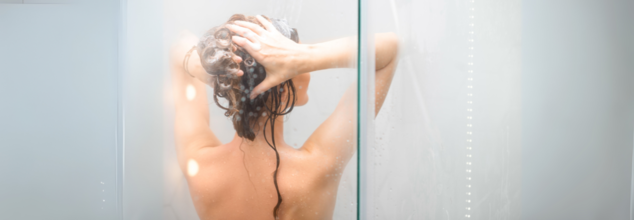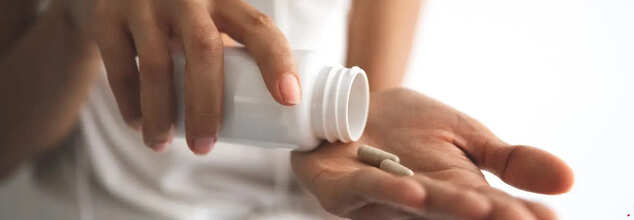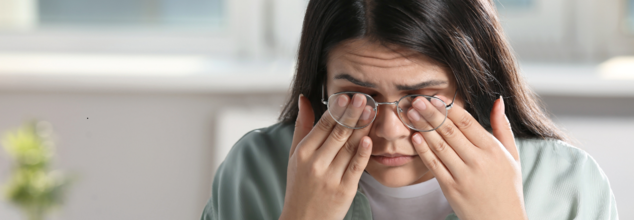
Image Credits: Canva
Turns Out, Peeing In The Shower Could Have Unexpected Dangers
You step into the shower after a long day, letting the warm water wash over you. And then it hits you-that urge to just let go. It's harmless, it's convenient. But what if that act has hidden risks? Experts warn that peeing in the shower may have an unexpected consequence or two.
Whether you’re a multitasking parent, an athlete fresh from an intense workout, or simply someone who doesn’t want to interrupt a relaxing hot shower, the temptation to relieve yourself under running water is understandable. Some even argue that it saves water and is an eco-friendly choice. But what if this seemingly harmless habit comes with unexpected risks? According to health experts, peeing in the shower can have unintended consequences beyond hygiene concerns.
Although urinating in the shower may appear hygienic due to its immediate wash-away effect, there are other issues of concern. According to a prominent urogynecologist, the habit causes the bladder response to become dysfunctional and weakens the pelvic floor muscles over time. Moreover, exposure to bacteria from shared or public showers poses an issue.
The bladder and brain collaborate to ensure you have the appropriate bladder control. You could unwittingly condition your bladder to feel the need to urinate if you repeatedly urinate in the shower due to the running water. Gradually, you could develop a sensation of urinary urgency-an urgent feeling to urinate that might not be under control.
This habit may worsen the symptoms of an individual with pre-existing conditions like overactive bladder. The ongoing reinforcement of this response could even help in the causation of issues about incontinence later in life.
Increased Risk of Infections
Although urine is generally considered to be relatively sterile, this is not entirely true. Urine can harbor bacteria, especially if a person has an undiagnosed urinary tract infection (UTI). When urinating in the shower, bacteria may spread onto surfaces, leading to an increased risk of infections.
The problem worsens in shared or public showers where urine residue may combine with bacteria and fungi found in damp environments. There is always a high chance of developing infections, which include UTIs, skin infections, or even fungal growth like athlete's foot in these places.
Weakening of Pelvic Floor Muscles
Urinating while standing is not ideal for the pelvic floor of a person with female anatomy. Hovering or standing up doesn't allow the bladder to relax fully and completely empty itself. Eventually, this causes weakened pelvic floor muscles and may result in stress incontinence—when urine leaks due to activities like coughing, sneezing, or exercising.
Pelvic health is important and helps maintain good bladder control; experts advise posture during urination. The process of squatting or sitting wholly on the seat of the toilet will ensure an empty bladder at the end with less strain put on the muscles of the pelvis.
Hygiene Consideration and Cleaning Protocols
If you are going to pee in the shower, then keep it clean. Showers and bathtubs should be cleaned with a disinfectant once a week, as bacteria and mold can collect. Fungi love moist surroundings, and molds in the shower can cause breathing problems or rashes. When you notice that your shower is smelling musty or has visible dark patches on the tiles, it is most likely due to mold accumulation and requires regular cleaning.
For individuals who are going to take showers in public showers, for instance, at a gym or other communal dwelling setting, the danger of contamination with bacteria and fungi is significantly greater. Avoiding contact with moist surfaces while wearing flip-flops can minimize infection risks.
Environmental Considerations: Does It Really Save Water?
The most popular argument in support of peeing in the shower is water conservation. It can take about 1.6 gallons of water to flush a toilet, so peeing in the shower would seem like a very eco-friendly practice. However, the benefits to the environment are minor in comparison to the risks to personal health and hygiene.
If water conservation is a concern, there are alternative approaches, like installing low-flow toilets or adopting sustainable flushing habits like the "if it's yellow, let it mellow" rule, which involves flushing only when necessary.
So, Is It Safe or Not to Pee in Shower?
While an occasional peeing in the shower may not lead to any serious health problems, a habit would surely cause long-term complications. Starting with training your bladder for when running water approaches to weakening the pelvic floor muscles, the risks outweigh the ease of access. Furthermore, hygiene is a concern, especially in a public environment, where this practice might be considered questionable.
If you intermittently pee within the showering, ensure to do it with your shower alone and keep personal hygiene practices; however, more experienced people and medical professionals claim you should overcome the habit all together to defend your bladder for possible complications as well.
The bottom line is that whether you pee in the shower or not is a decision, but the understanding of these risks will definitely make you come up with an informed choice. In case of experiencing urinary urgency or suspecting issues with bladder control, consult a healthcare professional for advice.

(Credit-Canva)
Amid Conflicting Bird Flu Reports, Parents Are Struggling To Find Reliable Information For Kids Safety
As bird flu progresses in US, parents along with other concerned citizens of the country are scrambling to get information about it. Centers of Disease Control and Prevention (CDC) explains that while the current risk is low, they are working towards bettering the situation with the help of state and monitoring people with animal exposure.
It's hard for parents to know what's really going on with bird flu. A recent survey done by University of Michigan Health C.S. Mott Children's Hospital National Poll on Children's Health showed that many parents just can't find good, trustworthy information. Parents don't know who to believe or where to look which makes them feel worried and unsure about how to keep their families safe. It is important to know the real facts, but it's tough when they find varied reports everywhere. Some parents think the news is making it sound worse than it is, while others are concerned that not enough is being done.
What Are Parents Concerned About?
Many parents are feeling lost when trying to find information about bird flu. They see different stories online and on TV, and they don't know what's true. This makes them worry because they want to protect their kids. Parents mostly rely on news reports (78%) for information, while others use social media is also a common source (31%). The rest turn to the internet (19%), family and friends (15%), government agencies (11%) and health care providers (11%) .
Parents are worried about bird flu spreading to people. They're scared that animals could give it to humans, or that people could give it to each other. They're also not sure if the government can handle a big outbreak. They don't have much confidence that the government can get rid of infected animals or food. They're also worried that they won't get clear information about recalls or how to get rid of dangerous products. They just want to feel like someone is in control.
The survey also revealed that one-third of the parents took action to protect their family against the bird flu, while 22% were being more careful about the hygiene. Of them, 13% were cautious handling eggs, chicken and other meat products, 12% avoid contact with birds, and 10% avoided raw milk.
Flu viruses can infect chicken eggs by entering through the eggshell. The eggshells are smaller than the pores of eggshells, which means viruses can enter the eggs and the egg's surface will still be protected. However, it is still important to handle it safely.
As per the US Food and Drug Administration, cooking poultry, eggs and other animal products to the proper temperature and preventing cross-contamination between raw and cooked food.
Symptoms of Bird Flu to Watch for
- Pink eye
- fever
- fatigue
- cough
- muscle aches
- sore throat
- nausea
- vomiting
- diarrhea
- study or runny nose
- shortness of breath
What Can Parents Do?
To feel safer, some parents are changing their habits. They're being extra careful about washing their hands and keeping things clean. Some are also being more careful when handling chicken and eggs, making sure they're cooked properly. Some parents are even avoiding contact with birds and wild animals, just to be safe. They're also being cautious about drinking raw milk and are eating less chicken and eggs. They are trying to be proactive.
The survey revealed that parents don't feel like they can trust the government's response to bird flu. This lack of trust makes them even more worried. When people don't know what's happening, they get scared. It's important for health officials to be open and honest about what they're doing to stop the spread of the virus. They need to give clear information about how to stay safe with food. This will help parents feel more calm and confident.

Credit: Canva
Chinese Shop Offers 'Placenta Processing', Sells Capsules Made After Birth
A snack shop in southeastern China has come under fire after allegedly advertising "placenta processing" services and selling capsules made from afterbirth. The incident, which surfaced on April 6, has triggered widespread criticism and prompted an official investigation.
The controversy began when a netizen posted online about Auntie Congee’s Snack Shop, located near the Changzhou Hospital of Traditional Chinese Medicine in Jiangsu province. According to the post, the shop was involved in the processing of human placentas and selling them in capsule form, claiming health-boosting properties.
Images shared on social media revealed a signboard outside the store clearly stating “placenta processing.” The shop reportedly charged 800 yuan (US$110) if the customer did not provide their own placenta, and 300 yuan if they did. The business claimed that all placentas used were obtained from new mothers in hospitals.
The owner, who previously worked in post-partum recovery, told local media that she could also connect customers with maternity matrons. Alongside the physical snack shop, she also operated an online store named Zixuan Maternity Matron Centre.
The online platform offered various post-partum services, including maternity care, childcare, meal preparation for new mothers, placenta processing, and recovery services. Promotional materials showed the process of grinding placentas with ingredients such as ginseng powder and turning the mixture into capsules, which were labelled *ziheche*, the term used in traditional Chinese medicine for placenta.
A poster advertising the shop highlighted the supposed benefits of consuming placenta, noting it is rich in protein and nutrients. It also mentioned two processing techniques—patented freezing and traditional methods—offering customers the option to observe the process in person.
The Shop Has Been Shut Down For Rectification
On April 8, the Changzhou Municipal Health Commission informed Jimu News that the shop had been shut down for rectification. A commission staff member stated, “We are currently investigating the source of the placentas. Preliminary findings indicate that they did not come from any hospital.”
In traditional Chinese medicine (TCM), the use of placenta has long been believed to help replenish energy and nourish the blood. It is sometimes recommended for individuals experiencing fatigue, chronic coughing, or infertility. However, citing ethical and safety concerns, the Chinese Pharmacopoeia delisted placenta as an approved medicinal ingredient in 2015.
Under Chinese law, placentas are considered the personal property of the post-partum mother, who alone can decide how they are disposed of. The sale of placentas by individuals or organisations remains illegal.
The case, initially reported by the Yangtze Evening News, has sparked outrage online. One user remarked, “I really cannot believe there are people who eat placenta as food. It is so disgusting.” Another added, “It is already the year 2025! Who even believes in such nonsense? And treating women as some kind of ‘superfood’—is that not objectifying women?” A third person said, “This is not surprising at all. In the past, hospitals would ask mothers whether they wanted to keep their placentas. If they did, it was usually consumed as food.”

Credits: Canva
8 Reasons Why You May Have An Itchy Eye
People can have itchy eyes for various reasons. The reasons may include allergies, environmental pollutants, infection, and some conditions that can affect the eyes. The treatments could vary from home remedies to medical intervention.
Seasonal Allergies
If you have itchy eyes around the same time in the year, you may have seasonal allergies. You could be allergic to ragweed or something else that blooms during the season, releases pollen and gets into your eyes that time of the year.
You may also get reactions like sneezing and nasal congestion. Allergic symptoms are also triggered by histamine, which is a compound released by cells to defend against allergens. It causes an inflammatory response, and itchy eyes are one of the common signs of it.
So, what can you do?
- Pay attention to the local weather reports, look out for pollens.
- Keep your doors and windows locked.
- Take showers and wash clothes to keep pollen away.
- Wear a mask every time you stay outside.
To counter your allergies, you can also use over-the-counter astihismine medications, which can be helpful for controlling symptoms.
Perennial Allergies
They are not like seasonal allergies, they are the ones that stay year-long. Things like mold, dust, and pet dander could be the reason that can trigger perennial eye allergies.
You might be allergic to certain products around your home. Your contact lens solution could be bothering your eyes, or even your soap or shampoo might be the cause.
If you've already ruled out environmental allergens, try stopping the use of any product that comes into contact with your eyes. It may take some trial and error, but finding the source can make a big difference.
To know for sure if you have an allergy, an allergist can do a skin test. This involves putting small amounts of allergens—like ragweed or pet dander—just under your skin to check for a reaction. These tests are generally safe for both kids and adults.
Along with avoiding allergens, medications like antihistamines or corticosteroids can help reduce eye inflammation and discomfort.
Airborne Irritants
There could be people who are sensitive to smoke, diesel exhaust, or even certain perfumes. You could use soothing eye drops to cool the irritation.
Infection
Eye infections could come from viral, bacterial, and fungal infections. These all can make your eye itchy. One of the common infections is conjunctivitis, also known as pink eyes. It is very contagious and could be accompanied by drainage from the affected eye.
Other infections could be uveitis, which is an inflammation to the iris. Steroids may also help with this. The best way to deal with it is to see a doctor and get the right help.
Dry Eye
There could be a lot of reasons that can cause a dry eye. This happens when your tears dry out, which are made from combination of water, oil, and mucus to keep your eyes moist.
Diabetes could be the reason for dry eyes. Sometimes, a blocked tear duct or tear gland leads to dry and itchy eyes. Other reasons which may contribute to dry eyes are:
- antidepressants
- medications that lower blood pressure
- birth control pills
- decongestants
Eyestrain
If you look at your computer screens for a little too long, or try to read something in a poorly lit area, it can strain your eyes and they could feel very itchy and dry. In fact, driving for a long time, especially at night could also strain your eyes. It can also feel itchy, if it is too sunny.
Overusing Contact Lenses
Contact lenses also have to be used for a limited time period. If you have worn your contact lenses for too long, or have not replaced it, or washed them regularly, it can itch your eyes.
Blepharitis
Red and itchy eyes can sometimes be caused by blepharitis—an inflammation of the eyelids. This happens when the tiny oil glands near the base of your eyelashes get blocked. Keeping your eyelids clean can often help ease symptoms like swelling and watery eyes.
While blepharitis usually doesn’t affect your vision, it can become a long-term issue and may lead to conjunctivitis or other eye problems. In some cases, antibiotics or anti-inflammatory medicines may be needed to manage it and prevent complications.
© 2024 Bennett, Coleman & Company Limited

